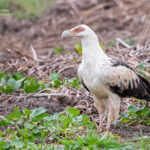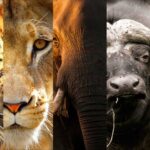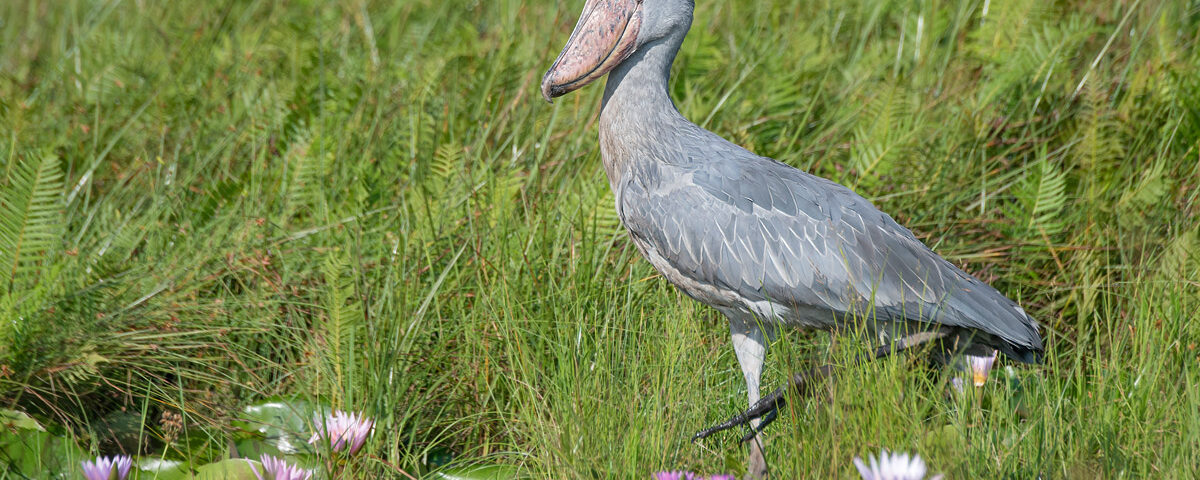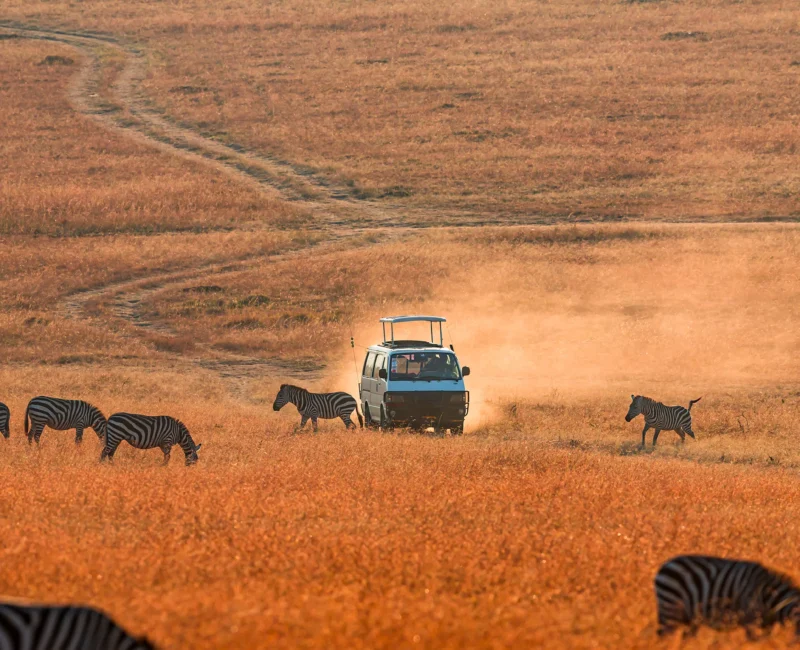
When is Birding Season at Murchison Falls?
May 27, 2025
Top 10 Wildlife Species Unique to Uganda
May 28, 2025Understanding Uganda’s Diverse Ecosystems
Understanding Uganda’s Diverse Ecosystems is fundamental for anyone planning a comprehensive Uganda safari or an immersive wildlife safari experience in East Africa. Uganda’s ecological tapestry is remarkably varied, ranging from dense tropical rainforests to sprawling savannahs, vast wetlands, and dramatic riverine environments. This diversity creates the perfect backdrop for some of the continent’s most renowned wildlife encounters, including The Big Five Safari, gorilla trekking, and chimpanzee tracking, as well as a wealth of birdlife and cultural traditions.
When embarking on Uganda Wildlife Safaris, gaining insight into the country’s ecosystems enhances not only your appreciation for its natural wonders but also guides you in choosing the best parks and reserves to visit. For example, Murchison Falls tours offer an incredible mix of riverine habitats and savannah plains, ideal for spotting large mammals and the breathtaking waterfalls that give the park its name. On the other hand, the lush forests of Bwindi Impenetrable and Kibale provide sanctuary to primates and myriad bird species.
Embracing the Complexity of Uganda’s Natural Landscapes
By understanding the complex interactions between Uganda’s ecosystems and its wildlife, travelers can tailor their Uganda Wildlife Tour to maximize both adventure and learning. This writeup will explore the key ecosystems in Uganda, highlight the best wildlife experiences, and outline cultural activities that enrich every wildlife safari.
The Savannah and Grasslands: Heart of The Big Five Safari and Big Game Drives
One of the most iconic ecosystems for understanding Uganda’s diverse ecosystems is the vast savannah and grassland plains. These open landscapes, found in parks like Murchison Falls National Park and Queen Elizabeth National Park, are prime locations for big game drives and The Big Five Safari. The wide expanses of grassland support thriving populations of elephants, lions, buffalo, leopards, and occasionally rhinoceros, making Uganda a key destination for classic wildlife safaris.
The grasslands are not just home to large mammals but also host abundant herbivores like Uganda kob, waterbuck, hartebeest, and giraffes, which provide ample prey for the big cats. The ecosystem supports a complex predator-prey dynamic that can be witnessed firsthand on Murchison Falls safaris, where expert guides lead visitors through thrilling game drives in search of the best wildlife sightings.
In addition to mammals, these ecosystems are vital for many bird species, including the majestic African fish eagle, secretary birds, and various vultures. The combination of rich wildlife and striking scenery, often with views of the Victoria Nile cutting through the plains, makes the savannahs essential for any Uganda Wildlife Safari itinerary.
Understanding how the savannah ecosystem functions, from seasonal grazing patterns to predator behaviors, deepens your appreciation for the delicate balance that sustains Uganda’s wildlife heritage and enhances every wildlife safari experience.
Tropical Rainforests: The Realm of Chimpanzee Tracking and Gorilla Trekking
Another critical component of understanding Uganda’s diverse ecosystems lies in the tropical rainforests, which are home to some of the most sought-after primates in the world. Forests such as Bwindi Impenetrable National Park, Mgahinga Gorilla National Park, and Kibale Forest National Park offer the perfect habitat for gorilla trekking and chimpanzee tracking adventures that define many Uganda safaris.
These dense, mist-covered forests provide shelter and food for endangered mountain gorillas, chimpanzees, and numerous other primate species, as well as countless birds, butterflies, and unique flora. Trekking through these ecosystems requires guided excursions that combine physical adventure with the opportunity to witness rare wildlife in their natural environment.
Understanding the ecological importance of Uganda’s rainforests enriches your Uganda Wildlife Tour by highlighting conservation efforts vital to protecting these fragile habitats and their inhabitants. The forests also support local communities who rely on sustainable tourism and forest products, thus making cultural safaris in Uganda an integral part of the experience.
Incorporating chimpanzee tracking and gorilla trekking into your Murchison Falls tours or wider safari itinerary showcases Uganda’s biodiversity spectrum—from the sweeping savannahs to the mysterious forest depths—and reflects the true diversity of its ecosystems.
Wetlands and Riverine Ecosystems: The Lifeblood of Uganda’s Wildlife
Wetlands and riverine ecosystems are central to understanding Uganda’s diverse ecosystems, especially in regions surrounding Murchison Falls, Lake Victoria, and the vast Nile River system. These watery habitats are vital for maintaining Uganda’s biodiversity, supporting fish, amphibians, reptiles, and a huge variety of bird species. They also provide essential watering points for large mammals during the dry season, enhancing the chances of wildlife sightings during Murchison Falls safaris and big game drives.
The wetlands near Murchison Falls are famous for their large hippopotamus populations, Nile crocodiles, and exotic water birds like the shoebill stork and African jacana. Boat safaris along the Nile and around the wetlands allow visitors to experience this ecosystem up close, blending peaceful wildlife viewing with stunning landscape photography.
Riverine forests lining Uganda’s waterways offer a cool refuge for primates such as vervet monkeys and baboons, and are critical corridors for animal migration. The interaction between water and land ecosystems sustains the rich variety of life found in Uganda and highlights the importance of conserving these habitats.
Exploring wetlands and riverine systems enriches your Uganda Wildlife Safari by providing a dynamic complement to savannah and forest ecosystems, offering a comprehensive view of Uganda’s ecological richness and complexity.
Cultural Safaris in Uganda: Exploring Human-Nature Connections
No discussion of understanding Uganda’s diverse ecosystems would be complete without recognizing the vital role of the country’s indigenous communities. Cultural safaris in Uganda offer an enriching layer to any wildlife safari, allowing travelers to experience the vibrant traditions, crafts, and lifestyles of the many ethnic groups who live harmoniously with nature.
Around Murchison Falls and other parks, cultural visits provide firsthand insight into how communities such as the Alur, Lugbara, and Basongora adapt to and benefit from their environment. Activities include traditional dance performances, basket weaving, storytelling, and participation in ceremonies that celebrate nature’s cycles.
These experiences foster appreciation for Uganda’s cultural diversity and illustrate the crucial role local people play in conserving ecosystems. Community-based tourism initiatives often support wildlife conservation and provide sustainable livelihoods, which enhances the overall success of Uganda Wildlife Safaris.
Including cultural safaris in Uganda alongside wildlife excursions, such as Murchison Falls tours or gorilla trekking, ensures a well-rounded travel experience that honors both natural and human heritage.
Planning Your Uganda Wildlife Tour: Maximizing the Experience Across Ecosystems
Successfully understanding Uganda’s diverse ecosystems requires thoughtful planning to fully enjoy the variety of habitats and wildlife encounters available across the country. A well-crafted Uganda Wildlife Tour balances time between savannahs, forests, wetlands, and cultural sites to provide an immersive experience.
For instance, starting with Murchison Falls safaris allows visitors to explore savannah ecosystems and riverine landscapes, with thrilling big game drives and boat cruises. Transitioning to forested areas like Bwindi or Kibale offers opportunities for gorilla trekking and chimpanzee tracking, showcasing Uganda’s primate diversity.
Timing your visit during the dry seasons (December to February and June to September) increases wildlife visibility across ecosystems, while travel with reputable operators ensures knowledgeable guides who enhance understanding of ecological and cultural contexts.
Packing appropriate gear, including binoculars, sturdy footwear, and weather-appropriate clothing, ensures comfort across diverse terrains. Accommodation ranges from luxury lodges to eco-friendly camps that reflect Uganda’s commitment to sustainable tourism.
Strategically combining these elements guarantees a rewarding wildlife safari that deepens your connection to Uganda’s ecological wealth and cultural richness.
Conclusion: Why Understanding Uganda’s Diverse Ecosystems Elevates Every Safari
In conclusion, understanding Uganda’s diverse ecosystems is key to unlocking the full potential of a wildlife safari or Uganda safari. From the expansive savannahs hosting The Big Five Safari on exhilarating big game drives, to the dense rainforests where gorilla trekking and chimpanzee tracking bring visitors close to nature’s most extraordinary primates, Uganda’s ecological variety is awe-inspiring.
The wetlands and riverine systems add another dimension, providing unique habitats for aquatic species and birds, while cultural safaris in Uganda highlight the vital human connection to these landscapes. Together, these ecosystems form a rich mosaic that defines Uganda as a premier safari destination.
For those seeking an authentic and diverse Uganda Wildlife Tour, embracing this ecological diversity through tailored Murchison Falls tours, forest treks, and cultural experiences offers a transformative journey. Partner with Roko Africa Adventures to design an itinerary that captures the essence of Uganda’s ecosystems and leaves you with unforgettable memories of Africa’s Pearl.




